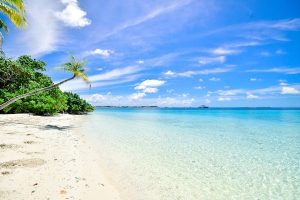How to Camp Like a Pro

Winter can be rough. Cold, icy weather, polar vortexes, crashing monsoon, mountains of snow. By the same token, any summertime excursion also holds vastly different, though equally dangerous risks. Scorching temperatures, wild animals, limited water resources; all these can also potentially cause some significant damage to any adventurers. It’s beautiful, but it’s dangerous, and can be very unforgiving. And yet, isn’t that what we love about it? In our pursuit of raw, adventure-filled experience, there’s no better way than to simply head out into the wilderness and live among the flora and fauna.
Because the wild is so unforgiving, you certainly don’t want to find yourself caught off guard, lost high in the mountains or short of water in a heat wave. Before you head out into the wilderness, make sure you’re doing whatever you need to do in order to best prepare, not only to ensure safety, but to also ensure you have a good time! Watch how much less you can stress so that you can focus more on the wildlife and enjoy the camping, by following our recommendations here.
#1. Find waterproof shoes with traction
 The gear you put on your feet is one of the most important parts of any excursion. It gets you from point a to point b. Select this based off of your terrain and region. Wear waterproof shoes if you are certain you will be fishing or wading into the shallow waves on the waters’ edge. Similarly, if you’re headed into snow, make sure the shoes are insulated to protect from the cold. They should also be a shoe with grip and traction along the bottom, to eliminate the potential doom resulting from any falls or slips. Rubber soled shoes are often an ideal choice, and they also give you a solid grip for when you’re trying to do some manual labor and get your tent thrown up. It’s also probably a better idea to select a pair that cover that ankle, to protect a vulnerable area and to keep you a bit warmer. Although a real high-quality pair of shoes can cause upwards of $200, there are plenty of discounted prices that will easily fit your budget.
The gear you put on your feet is one of the most important parts of any excursion. It gets you from point a to point b. Select this based off of your terrain and region. Wear waterproof shoes if you are certain you will be fishing or wading into the shallow waves on the waters’ edge. Similarly, if you’re headed into snow, make sure the shoes are insulated to protect from the cold. They should also be a shoe with grip and traction along the bottom, to eliminate the potential doom resulting from any falls or slips. Rubber soled shoes are often an ideal choice, and they also give you a solid grip for when you’re trying to do some manual labor and get your tent thrown up. It’s also probably a better idea to select a pair that cover that ankle, to protect a vulnerable area and to keep you a bit warmer. Although a real high-quality pair of shoes can cause upwards of $200, there are plenty of discounted prices that will easily fit your budget.
#2. Download a survival and wilderness app
Often times, when you’re out on camping trips you’ll be relieved to discover that cell phone services don’t often have service. In form that keeps it true to name, these types of apps are downloaded to your phone (make sure you get one that will work without internet) and feature a bunch of illustrated hot-to-videos on anything related to survival, including starting fires, building shelters, crossing rivers, etc. Hopefully these aren’t something you’ll need, but at least you’ll know you’re ultimately prepared for the worst scenario. On an iPhone or Android, if you go to Google Maps and look up an area or city, there will be an option to download that map onto your phone. And the GPS will work even if you don’t have any reception.
#3. Get a paper map or a map booklet
 You should know how to read a map. There are plenty of versions of maps available online, in stores, in side shops, or from local rangers on whatever park or area you’re headed to go camping in. However, just because we have the ability to make everything easier, that doesn’t mean we need the app to really make our way through a territory. The odd sense of traditionalism and purity that comes with wanting to figure out an folded map instead of taking the easy way out and searching it up on Google Earth, is wildly refreshing to those around you. It’s impressive, but more importantly, its fully immersive: campers are more inclined than they were before to leave their cell phones behind and lose themselves amongst nature. Allow yourself to be fully immersed in the world around you by bringing a map and avoiding your phone unless it’s an emergency.
You should know how to read a map. There are plenty of versions of maps available online, in stores, in side shops, or from local rangers on whatever park or area you’re headed to go camping in. However, just because we have the ability to make everything easier, that doesn’t mean we need the app to really make our way through a territory. The odd sense of traditionalism and purity that comes with wanting to figure out an folded map instead of taking the easy way out and searching it up on Google Earth, is wildly refreshing to those around you. It’s impressive, but more importantly, its fully immersive: campers are more inclined than they were before to leave their cell phones behind and lose themselves amongst nature. Allow yourself to be fully immersed in the world around you by bringing a map and avoiding your phone unless it’s an emergency.
#4. Conduct research
Do not go in blindly. A quick Google search tells you the dangers of the region, the animals you might find there, the types of poisonous or toxic plants in the area, and any other major potential pieces of information you might need to know, like terrain, accessibility, resources, and more. Can you bring bikes to this area? Is it tenting only? Is it campers or RV’s only? Are there contact names and numbers or you need to write down before you head out? Are there any trails that are must-hits during your competing stay? Protect yourself as a camper by knowing anything you need to know before you even start packing the car.
#5. Be prepared to layer
 Part of the research you’ve conducted should include the weather, and weather can often be in flux and changing. Be prepared to either peel off or add on layers, by wearing pieces in layers. Shirts, sweatshirts, and jackets are often the easiest way to go. In certain areas, the temperature difference can change in a matter of 30 degrees between mid-day and early evening. You want to be prepared to accommodate either one.
Part of the research you’ve conducted should include the weather, and weather can often be in flux and changing. Be prepared to either peel off or add on layers, by wearing pieces in layers. Shirts, sweatshirts, and jackets are often the easiest way to go. In certain areas, the temperature difference can change in a matter of 30 degrees between mid-day and early evening. You want to be prepared to accommodate either one.
#6. Buy the right gear
 Make sure you’ve got a durable, sturdy tent. This makes all the difference in the world when it comes to protection, shelter, and usability. There are plenty of reasonably priced tents on the market, but don’t go for one just because it’s cheap. When it comes to camping, having quality gear is really going to make the difference. This also includes whatever sleeping bag you find. Especially depending on the weather you’re headed into, a quality tent makes all the difference in the world. When you think of the necessities, you have food, shelter, and water. Water supply is one of the more important items you need to have. Kool8 water canisters are lightweight and easy to carry, hold a full 18 ounces, and are fully insulated to keep the temperature of the water stable.
Make sure you’ve got a durable, sturdy tent. This makes all the difference in the world when it comes to protection, shelter, and usability. There are plenty of reasonably priced tents on the market, but don’t go for one just because it’s cheap. When it comes to camping, having quality gear is really going to make the difference. This also includes whatever sleeping bag you find. Especially depending on the weather you’re headed into, a quality tent makes all the difference in the world. When you think of the necessities, you have food, shelter, and water. Water supply is one of the more important items you need to have. Kool8 water canisters are lightweight and easy to carry, hold a full 18 ounces, and are fully insulated to keep the temperature of the water stable.
Know what you’re doing and go in prepared, and it’s almost a certainty you’ll feel confident and ready to encounter whatever nature brings forth.






